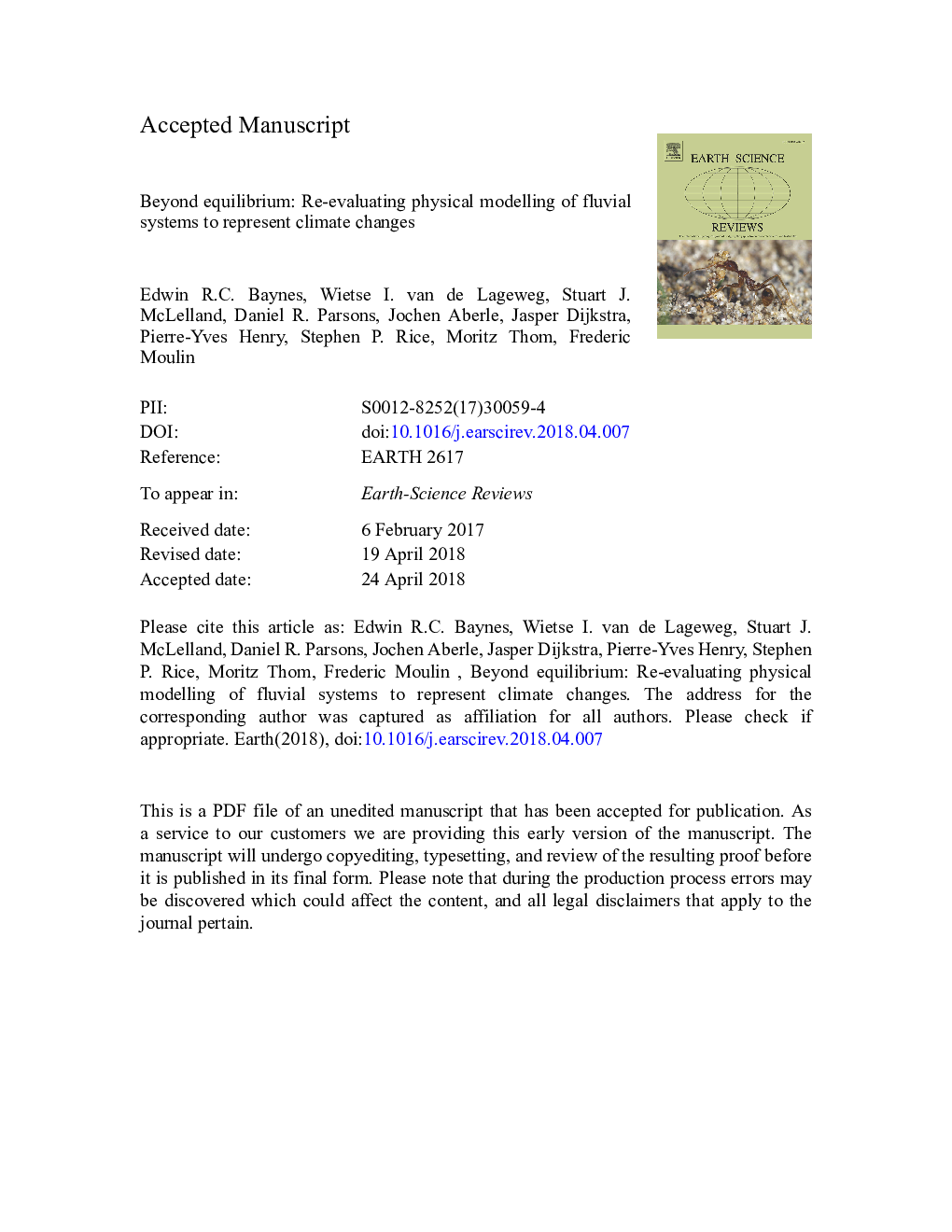| کد مقاله | کد نشریه | سال انتشار | مقاله انگلیسی | نسخه تمام متن |
|---|---|---|---|---|
| 8912940 | 1639921 | 2018 | 60 صفحه PDF | دانلود رایگان |
عنوان انگلیسی مقاله ISI
Beyond equilibrium: Re-evaluating physical modelling of fluvial systems to represent climate changes
ترجمه فارسی عنوان
فراتر از تعادل: دوباره ارزیابی مدل فیزیکی سیستم های رگبار برای نشان دادن تغییرات اقلیمی
دانلود مقاله + سفارش ترجمه
دانلود مقاله ISI انگلیسی
رایگان برای ایرانیان
کلمات کلیدی
موضوعات مرتبط
مهندسی و علوم پایه
علوم زمین و سیارات
زمین شناسی
چکیده انگلیسی
The interactions between water, sediment and biology in fluvial systems are complex and driven by multiple forcing mechanisms across a range of spatial and temporal scales. In a changing climate, some meteorological drivers are expected to become more extreme with, for example, more prolonged droughts or more frequent flooding. Such environmental changes will potentially have significant consequences for the human populations and ecosystems that are dependent on riverscapes, but our understanding of fluvial system response to external drivers remains incomplete. As a consequence, many of the predictions of the effects of climate change have a large uncertainty that hampers effective management of fluvial environments. Amongst the array of methodological approaches available to scientists and engineers charged with improving that understanding, is physical modelling. Here, we review the role of physical modelling for understanding both biotic and abiotic processes and their interactions in fluvial systems. The approaches currently employed for scaling and representing fluvial processes in physical models are explored, from 1:1 experiments that reproduce processes at real-time or time scales of 10â1-100 years, to analogue models that compress spatial scales to simulate processes over time scales exceeding 102-103â¯years. An important gap in existing capabilities identified in this study is the representation of fluvial systems over time scales relevant for managing the immediate impacts of global climatic change; 101 - 102â¯years, the representation of variable forcing (e.g. storms), and the representation of biological processes. Research to fill this knowledge gap is proposed, including examples of how the time scale of study in directly scaled models could be extended and the time scale of landscape models could be compressed in the future, through the use of lightweight sediments, and innovative approaches for representing vegetation and biostabilisation in fluvial environments at condensed time scales, such as small-scale vegetation, plastic plants and polymers. It is argued that by improving physical modelling capabilities and coupling physical and numerical models, it should be possible to improve understanding of the complex interactions and processes induced by variable forcing within fluvial systems over a broader range of time scales. This will enable policymakers and environmental managers to help reduce and mitigate the risks associated with the impacts of climate change in rivers.
ناشر
Database: Elsevier - ScienceDirect (ساینس دایرکت)
Journal: Earth-Science Reviews - Volume 181, June 2018, Pages 82-97
Journal: Earth-Science Reviews - Volume 181, June 2018, Pages 82-97
نویسندگان
Edwin R.C. Baynes, Wietse I. van de Lageweg, Stuart J. McLelland, Daniel R. Parsons, Jochen Aberle, Jasper Dijkstra, Pierre-Yves Henry, Stephen P. Rice, Moritz Thom, Frederic Moulin,
